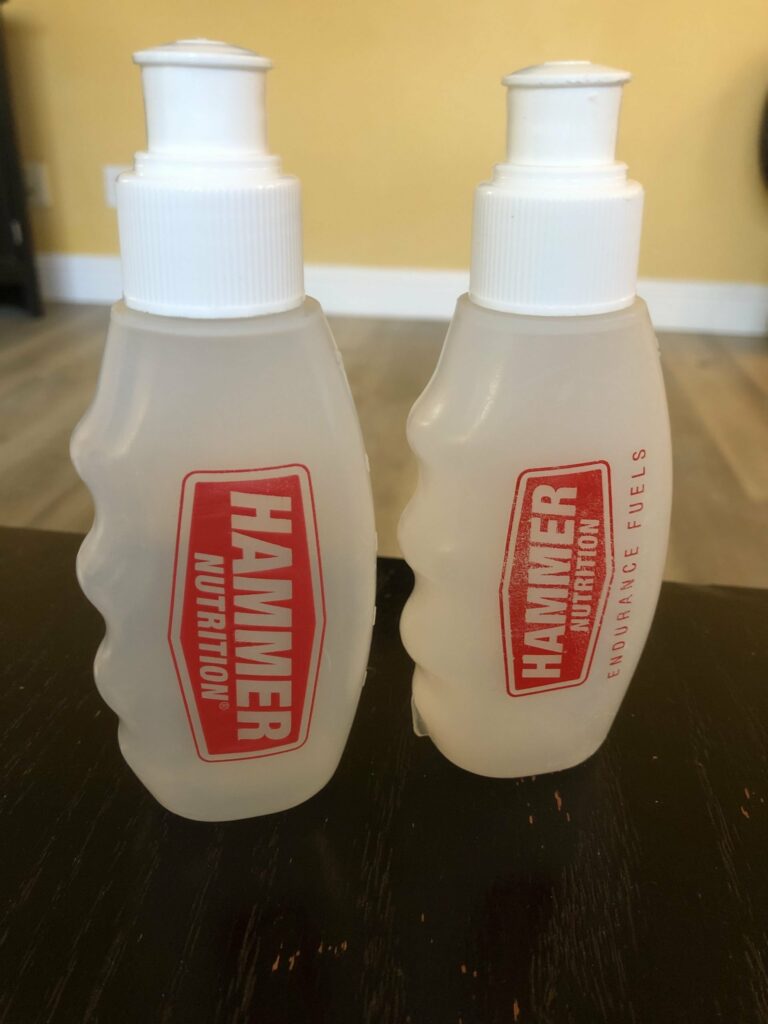
The Carbohydrate Drip Approach to Race Fueling
The latest edition of the International Journal of Sport Nutrition and Exercise Metabolism features a study that will be of interest to any runner seeking to perfect his or her race fueling practices. Conducted by scientists at the University of Bath and the University of Nottingham, the study compared the performance effects of consuming carbohydrate in small doses at high frequency and consuming an equal amount of carbs in one big lump at a crucial juncture during a treadmill run to exhaustion.
The subjects were six well-trained runners who ran as long as they could at a moderately high intensity on two separate occasions. On one occasion, the runners consumed 5 grams of sucrose every five minutes until they had taken in a total of 75 grams. On the other occasion, they consumed 75 grams of sucrose in a single dose 75 minutes into the run. Now, I know what you’re thinking: What runner in their right mind would gobble 75 grams of carbs all at once? Of course the first fueling protocol is going to yield better performance! But from an abstract physiological perspective, there’s no reason to make this assumption. That’s because the body of a well-trained runner stores enough carbohydrate to last more than 75 minutes at a moderately high intensity. So, in theory, the runners were getting that big lump of sucrose in time to preserve their ability to keep going at the same intensity.
Nevertheless, your assumption is correct: On average, the subjects lasted 105.6 minutes when given small, frequent doses of carbs compared to just 96.4 minutes when they had to wait 75 minutes for one big lump. But not all of the runners benefitted equally from the “carbohydrate drip” fueling approach. The researchers found that performance was most positively affected in those runners whose rate of stored carbohydrate use was reduced the most by frequent carb intake. This finding suggests that glycogen sparing was the mechanism by which frequent carb intake improved performance. But other research has shown that consuming carbs also boosts endurance performance by reducing perceived effort, so I’m sure this was a factor as well.
Granted, there is quite a bit of space between 5 grams of carbs every 5 minutes and 75 grams of carbs after 75 minutes. In the real world, runners are more likely to consume a gel packet containing 20 to 25 grams of carbs every 30 minutes or so. It would be interesting to see how this real-world fueling schedule compares to the carbohydrate drip approach. My hunch is that the closer a runner can get to a continuous, slow infusion of carbs during a race, the better. That’s why, when I take a crack at running a 2:38 marathon on March 29th, I will practice my version of the carbohydrate drip approach.
Here’s how it works: The Modesto Marathon (which is the event I’m competing in) has 13 aid stations, or one every 2 miles, give or take. I will grab a cup of Gatorade at each of them. Between aid stations, I will sip from one of two small flasks (as pictured above) containing a mix of Hammer Gel and water. These sips will be small and frequent—every 5 minutes or so. Between the Gatorade and the Hammer Gel I will take in 160 grams of carbs over the course of the race, or approximately 60 grams per hour. By executing this fueling plan, I should get more out of this amount of energy intake than I would if I took in the same amount in larger, less frequent doses, thanks to both glycogen sparing and a reduction in perceived effort. I have also found that the carbohydrate drip approach minimizes the GI discomfort that commonly attends energy intake during intense and prolonged running. What’s more, with the flasks I don’t have to worry about carrying sticky empty gel packets in my hand until I reach the next garbage can.
I should note that I am treating Modesto as a kamikaze marathon, meaning I intend to sustain my goal pace (6:04 per mile) until I reach the finish line or keel over. There will be no adjusting the pace based on how I feel as in a normal race. This makes it effectively a time-to-exhaustion test not unlike the one that was done in the study I described at the beginning of this article. It’s also the same strategy Eliud Kipchoge employed in his two sub-two-hour marathon attempts. Wish me luck!